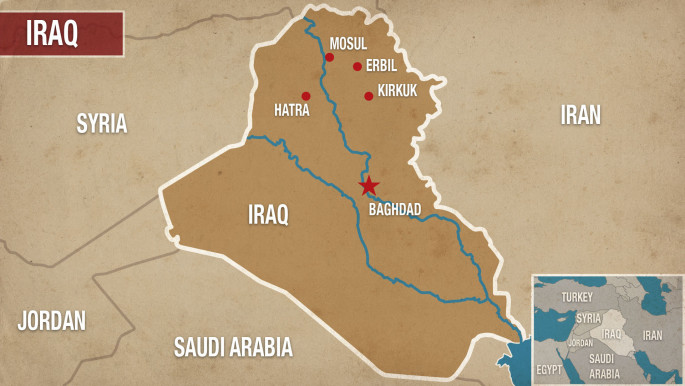Pro-government forces seize ancient Iraqi site Hatra from IS
Hashed al-Shaabi (Popular Mobilisation) paramilitary forces fighting IS around Iraq's second city Mosul said they had "liberated the ancient city of Hatra... after fierce clashes with the enemy".
The forces launched their offensive at dawn on Tuesday and swiftly retook villages in nearby desert areas and the Hatra archaeological site. They had advanced to the edge of the adjacent town of Hatra itself.
A local security source told The New Arab that the Hashed forces' advancement into the city was slowed down by IS fortifications, including bombs and landmines.
However, the Iran-backed forces managed to retake the city, supported by army helicopters and met by limited resistance from the militants.
Lying 120 kilometres (80 miles) southwest of Mosul, the extremists' last urban Iraqi stronghold, Hatra is one of a string of archaeological sites recaptured from IS in recent months.
 |
|
Known as al-Hadhr in Arabic, it was established in the 3rd or 2nd century BC and became a religious and trading centre under the Parthian empire.
Its imposing fortifications helped it withstand sieges by the forces of two Roman emperors.
Although Hatra finally succumbed to Ardashir I, founder of the Sassanid dynasty, it was well-preserved over the centuries that followed.
But after IS militants seized swathes of Iraq and Syria in a lightning 2014 offensive, they vandalised sculptures there as part of a campaign of destruction against archaeological sites they had captured.
The militants see such destruction as a religiously mandated elimination of idols – but they have no qualms about selling smaller artefacts to fund their operations.
 |
The militants see such destruction as a religiously mandated elimination of idols – but they have no qualms about selling smaller artefacts to fund their operations |  |
Damage unclear
The full extent of the damage to Hatra remains unclear.
IS has lost much of the territory it once controlled amid twin offensives in Syria and Iraq, including several ancient sites.
In November, less than a month into a vast operation to oust the extremists from Mosul, Iraq said it had recaptured Nimrud, a jewel of the Assyrian empire founded in the 13th century BC.
Journalists who visited immediately afterwards found shattered statues, wrecked ancient palaces and bulldozed structures in one of the region's most important archaeological sites.
Twitter Post
|
IS had smashed stone carvings and detonated explosives at the site.
Last month, Syrian regime forces recaptured the famed desert city of Palmyra from IS, who had destroyed priceless objects there too.
Also in March, Iraqi security forces recaptured Mosul's museum, where IS militants infamously filmed themselves smashing priceless artefacts.
The five-minute video from 2015 shows militants at the museum in Mosul knocking statues off their plinths and smashing them to pieces.
In another scene, militants used a jackhammer to deface an imposing granite Assyrian winged bull at the Nergal Gate in Mosul.
The destruction at the museum and the archaeological sites drew widespread condemnation internationally and inside Iraq.
Iraqi pro-government forces backed by a US-led coalition have been fighting since October to oust IS from Mosul.
The Hashed al-Shaabi, an umbrella group for militias that mobilised to fight IS, have focused their efforts on a front southwest of Mosul, aiming to seize the town of Tal Afar as well as desert areas stretching to the border with Syria.
Iraqi forces advanced in west Mosul this week, closing in on the Old City as the extremists executed civilians in a desperate bid to hold on to the last major Iraqi bastion of their crumbling "caliphate".
![Hashed Shaabi Hatra [AFP] Hashed Shaabi Hatra [AFP]](/sites/default/files/styles/large_16_9/public/media/images/BD82BADE-0B87-4F8F-9981-4F1D9FD07BAB.jpg?h=d1cb525d&itok=uXruaV0l)

![President Pezeshkian has denounced Israel's attacks on Lebanon [Getty]](/sites/default/files/styles/image_684x385/public/2173482924.jpeg?h=a5f2f23a&itok=q3evVtko)



 Follow the Middle East's top stories in English at The New Arab on Google News
Follow the Middle East's top stories in English at The New Arab on Google News


